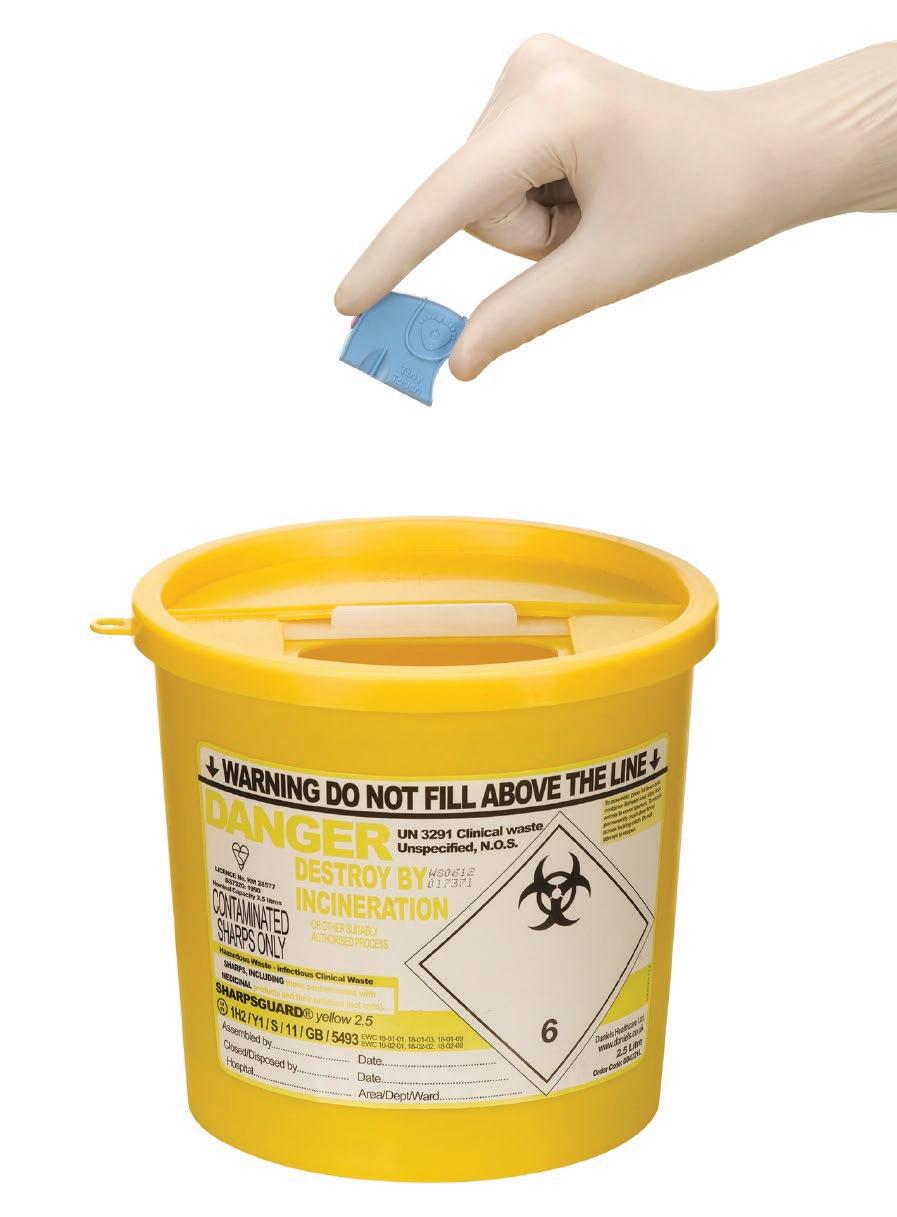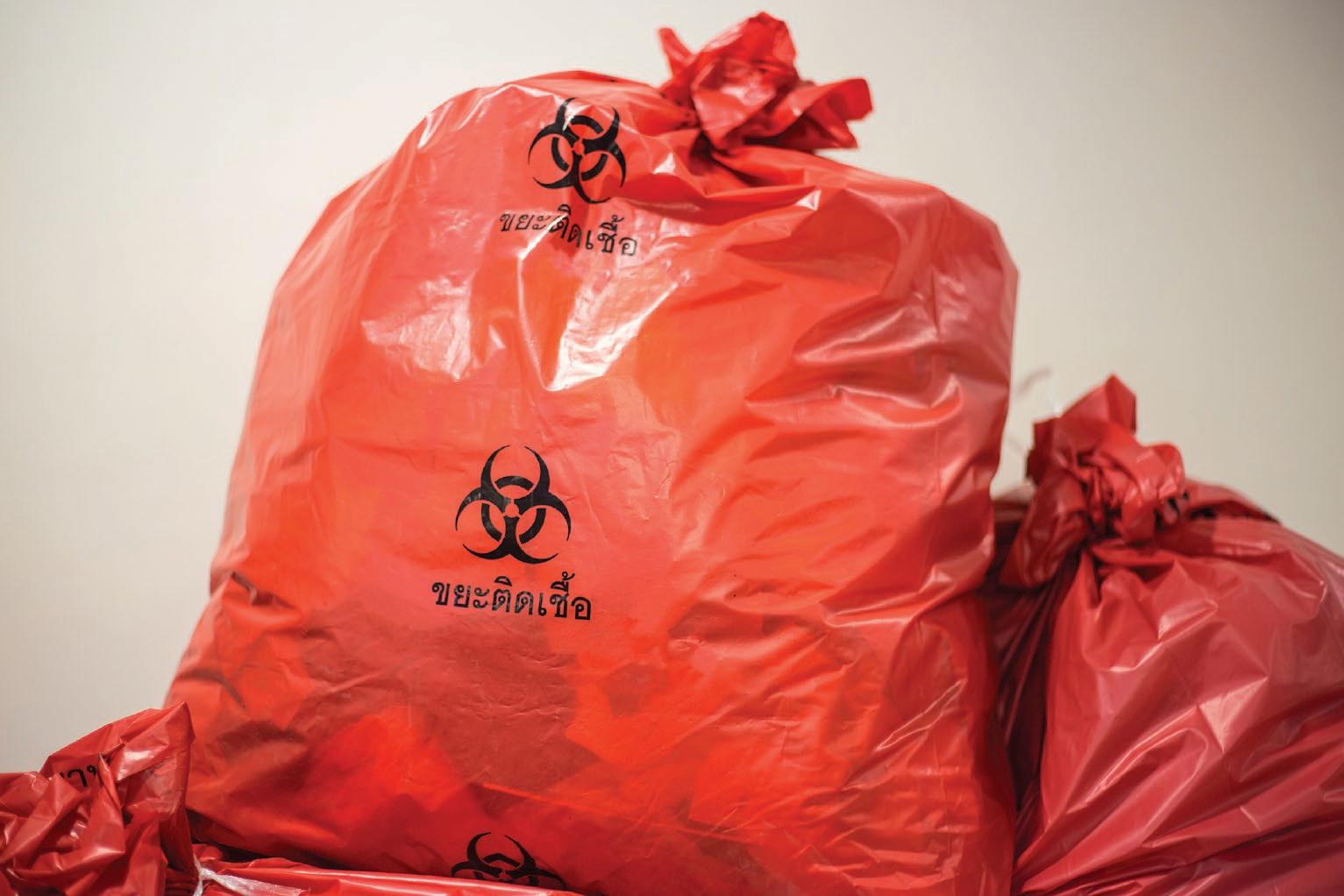PREVENTING NEEDLE STICK INJURIES AND THE ROLE OF SAFETY DEVICES
Prevention is Better Than Cure Camilla Slade, Staff Writer To prevent harm, the use of sharps and needles operates in a well regulated environment
In the previous article, John Hancock explained what needlestick injuries are and what can happen as a result of receiving one. But most people who receive such an injury will be most interested in what to do about it.
Ensuing treatment will vary from nothing at all in the event that the person who has been injured is judged at low or no risk of infection, to antibiotics, vaccination against hepatitis B and, where the risk of HIV contamination is high, treatment (such as postexposure prophylaxis (PEP)) to try and prevent infection
10 | WWW.HOSPITALREPORTS.EU
Dealing with a Needlestick Injury The UK Health and Safety Executive (HSE)43 has a useful guide… If you suffer an injury from a sharp which may be contaminated: • Encourage the wound to gently bleed, ideally holding it under running water • Wash the wound using running water and plenty of soap • Don’t scrub the wound whilst you are washing it • Don’t suck the wound • Dry the wound and cover it with a waterproof plaster or dressing • Seek urgent medical advice (for example from your Occupational Health Service) as effective prophylaxis (medicines to help fight infection) are available • Report the injury to your employer. That would be first aid, but anyone who has received a needlestick or a sharps injury will want to get trained medical treatment as quickly as possible. The NHS44 explains what will happen next as the injury is assessed. “The healthcare professional treating you will assess the risks to your health and ask about your injury – for example, how and when it happened, or who had used the needle. Samples of your blood may need to be tested for hepatitis B and C or HIV. Although rare, there’s also a small risk of other infections being transmitted through contaminated blood, such as cytomegalovirus (CMV) and Epstein-Barr virus. Your healthcare professional may also arrange to test samples of the other person’s blood if they give their consent.”
Ensuing treatment will vary from nothing at all in the event that the person who has been injured is judged at low or no risk of infection, to antibiotics, vaccination against hepatitis B and, where the risk of HIV contamination is high, treatment (such as post-exposure prophylaxis (PEP)) to try and prevent infection, although it doesn’t always work.
A Regulated Device and Process As in any health-related issue, prevention is better than cure and so there are regulations that govern the use and handling of sharps and needles to try to avoid injuries occurring. The regulations acknowledge that sharps such as needles and scalpels will remain essential tools for effective medical care but aim to ensure they are only used where their use cannot be avoided. Those regulations and associated resources are too many and lengthy to detail here but readers will find a useful HSE central resource with numerous links at ‘Sharps injuries – Further information’45. But prevention goes further than simply only using sharps and needles where their use cannot be avoided. Often their use cannot be avoided, in which case, the UK Care Quality Commission (CQC)46 explains that; “Health and Safety Executive guidance says an employer will need to act to manage the risks if workers: • Use sharps to provide care or other services to people; • Provide care or other services to people who are likely to use sharps; • Are involved in handling such equipment after use - for example in sterile services and waste disposal; • Are likely to inadvertently come across used sharps - for example during laundering. Employers are legally required to assess risks from sharps injuries and put appropriate control measures in place.” Health and Safety (Sharp Instruments in Healthcare) Regulations 2013 apply to all organisations providing healthcare. This includes






